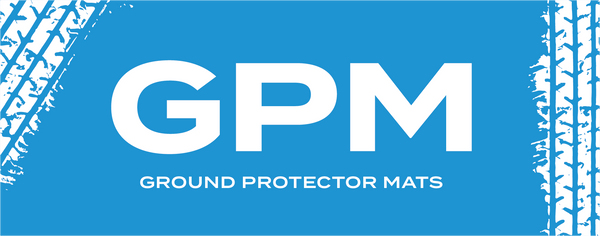Ground Protector Mats Demo Video
Tracked Equipment Ground Protection
Essential Ground Protection for Tracked Vehicles on Construction Sites
Tracked vehicles, such as bulldozers, excavators, and crawler cranes, are the workhorses of the construction industry. Their design allows for the distribution of the vehicle's weight over a large area, reducing ground pressure and enhancing mobility on soft or difficult terrains. Despite these advantages, tracked vehicles can still cause significant ground disturbance and suffer from reduced efficiency without proper ground protection. This is where ground protection mats come into play, providing essential support that benefits both the machinery and the job site.
The Challenges Faced by Tracked Vehicles
While tracks are designed to handle a variety of terrains, there are specific challenges they face on construction sites:
- Surface Damage: Tracked vehicles can tear up grassy or landscaped areas, leaving behind a trail of destruction that requires costly repairs.
- Reduced Mobility on Soft Ground: Soft, muddy, or sandy conditions can decrease the efficiency of tracked vehicles, limiting their ability to operate and move materials effectively.
- Increased Maintenance: Operating on rough, rocky, or debris-filled surfaces can lead to increased wear and tear on tracks, necessitating frequent repairs or replacements.
The Role of Ground Protection Mats
Ground protection mats address these challenges head-on, offering a range of benefits tailored to the needs of tracked vehicles:
- Surface Protection: Mats provide a barrier between the tracks and the ground, minimizing damage to turf, landscaping, and paved surfaces. This protection is crucial for projects in sensitive or aesthetic areas, such as parks, residential neighborhoods, and commercial developments.
- Enhanced Mobility: By creating a stable and consistent surface, mats improve the mobility of tracked vehicles across various conditions, from soft soils to uneven terrain. This increased efficiency can significantly reduce the time and fuel costs associated with transporting materials and completing tasks.
- Reduced Maintenance Costs: A smoother operating surface reduces the strain on vehicle tracks, leading to less wear and tear and extending the lifespan of these costly components.
Real-World Applications
In practical terms, consider a large-scale construction project that involves significant earthmoving activities. Bulldozers and excavators are required to move across the site, transporting soil and debris. Without ground protection mats, these tracked vehicles could struggle in wet conditions or leave deep ruts in softer areas, slowing down progress and damaging the site. By deploying ground protection mats, the site manager ensures that these machines can move freely and efficiently, maintaining project momentum and reducing the need for post-project landscaping restoration.
Conclusion: A Solid Foundation for Tracked Machinery
For construction projects relying heavily on tracked vehicles, ground protection mats are not just an added luxury; they are a necessity. They safeguard the operational integrity of the machinery, protect the physical environment of the job site, and ultimately contribute to the project's bottom line by ensuring tasks are completed efficiently and on schedule. Investing in high-quality ground protection mats is a strategic decision that enhances the performance of tracked vehicles and drives construction projects to success.
